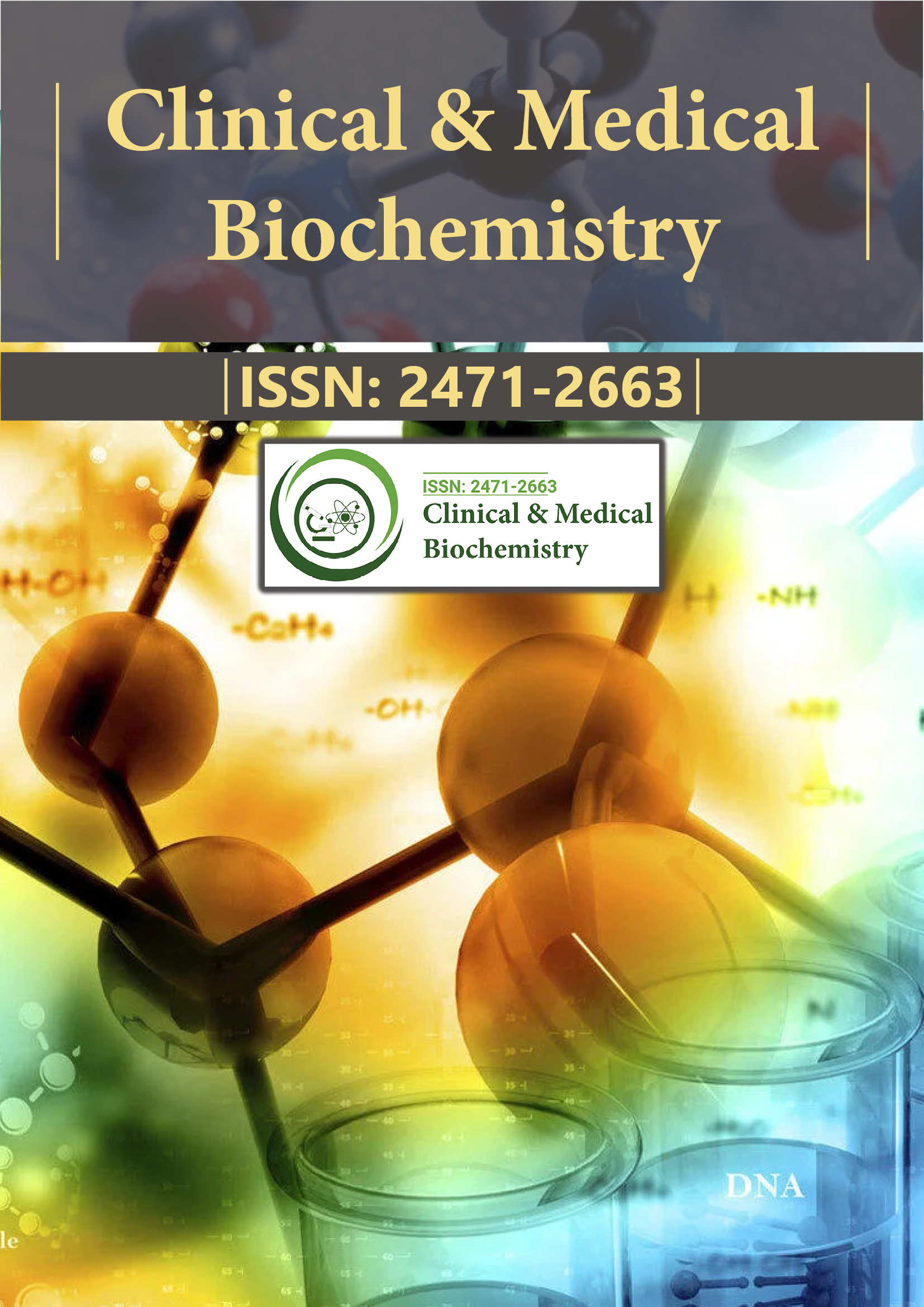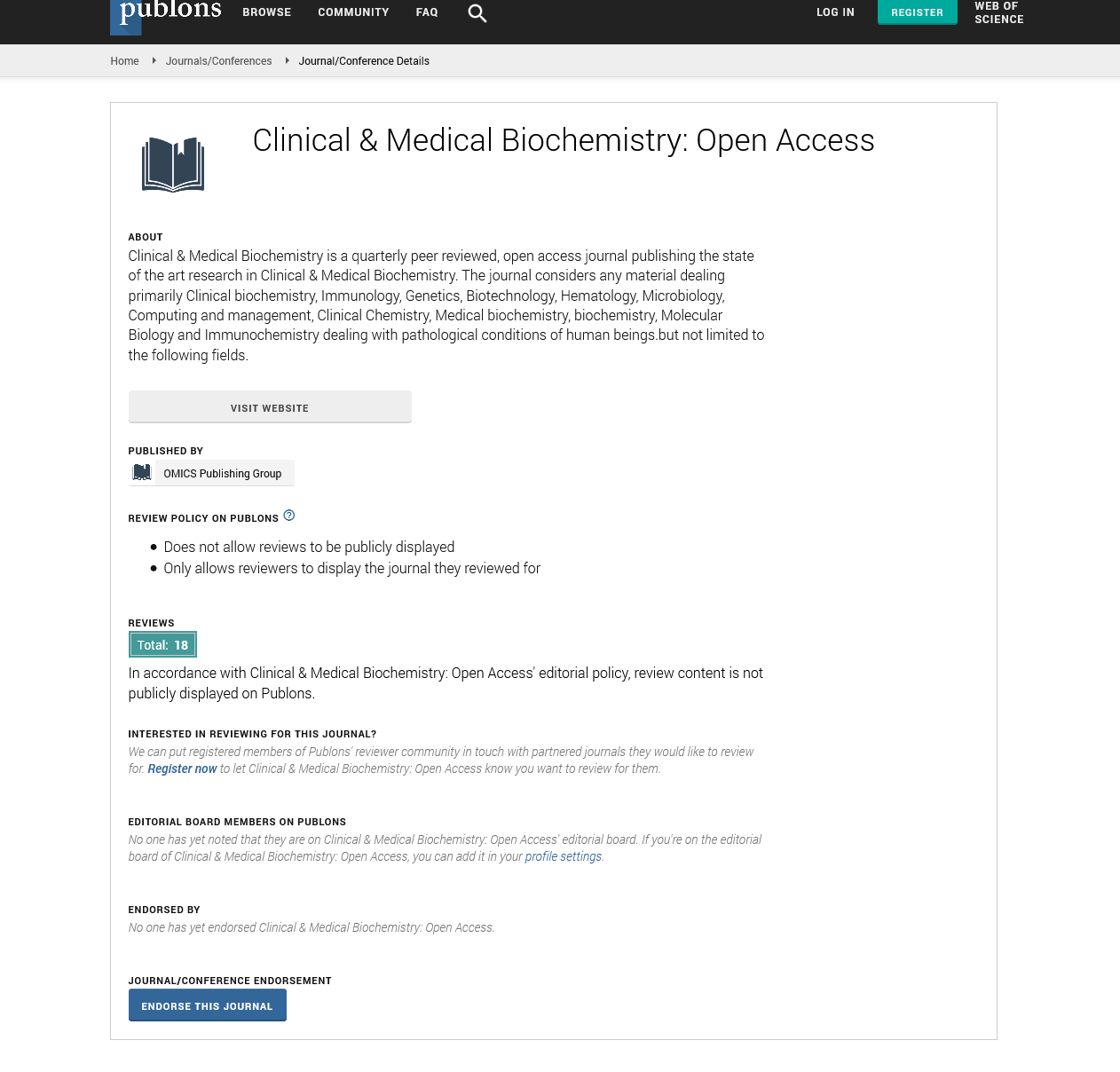Indexed In
- RefSeek
- Directory of Research Journal Indexing (DRJI)
- Hamdard University
- EBSCO A-Z
- OCLC- WorldCat
- Scholarsteer
- Publons
- Euro Pub
- Google Scholar
Useful Links
Share This Page
Journal Flyer

Open Access Journals
- Agri and Aquaculture
- Biochemistry
- Bioinformatics & Systems Biology
- Business & Management
- Chemistry
- Clinical Sciences
- Engineering
- Food & Nutrition
- General Science
- Genetics & Molecular Biology
- Immunology & Microbiology
- Medical Sciences
- Neuroscience & Psychology
- Nursing & Health Care
- Pharmaceutical Sciences
Perspective - (2023) Volume 9, Issue 2
Role of Fructose and its Action Mechanism in Causing Cardiovascular Risk
Ouyang Yafeng*Received: 03-Mar-2023, Manuscript No. CMBO-23-20522; Editor assigned: 06-Mar-2023, Pre QC No. CMBO-23-20522 (PQ); Reviewed: 20-Mar-2023, QC No. CMBO-23-20522; Revised: 27-Mar-2023, Manuscript No. CMBO-23-20522 (R); Published: 03-Apr-2023, DOI: 10.35841/2471-2663.23.9.152
Description
Cardiovascular Disease (CVD) is a group of heart and/or blood vessel problems that includes peripheral artery disease, stroke, coronary heart failure, high blood pressure, and other vascular and/or cardiac conditions. CVD is the largest cause of morbidity and mortality worldwide, and it is a huge burden on healthcare systems. According to several varied factors, such as nutrients, food, or eating patterns, each of which has changed through time in conjunction with the most recent discoveries, CVD prevention and development are related with diet and nutrition, respectively. In any case, some risk factors for the development of CVD, such as diet, smoking, lifestyle, or environment, are controllable, while others, such as genetic factors, age, gender, or history, are not. Dietary regimens include composition, caloric intake, and meal patterns, as well as the manipulation of lowgrade chronic inflammation, either separately or in conjunction with lifestyle factors that affect CVD. In addition to a high intake of glucose and macronutrients as well as chronic overeating, obesity and Diabetes Mellitus (DM) are both proinflammatory state conditions that reduce the anti-inflammatory effects of insulin by increasing insulin resistance and interfering with the insulin-signaling mechanisms.
Fructose enters the bloodstream more slowly than glucose, creating lower levels but with more permanence. Just 8 g of the total 49 g of fructose consumed daily in a Western diet comes from natural sources. The primary site of metabolism is the liver, where it is either converted to trioses and released into the bloodstream as lactate or converted to glucose via gluconeogenesis and eliminated or stored as glycogen. The pancreas is exposed to high fructose concentrations concurrently with the liver because of the steep gradient of blood entering and exiting the liver. Additionally, it is released from the liver as glucose, fatty acids, or lactate and oxidised in extrahepatic tissues or boosts the exogenous carbohydrate rate of oxidation. Fructose has the chemical formula C6H12O6. Sugar, honey, apple juice, and other primary- and secondary-caloric sweeteners are the main sources of fructose in the typical human diet. The Body Mass Index (BMI), which is higher in overweight and obese patients even even after controlling for age, smoking status, amount of physical activity, alcohol use, and total caloric intake, is also a factor in the relationship between glycemic index/glycemic load and Coronary Heart Disease (CHD). This may be because overweight and obese patients already have higher levels of adiposity.
Fructose and glucose levels in sugar-sweetened beverages are rising, as is their consumption. Whereas dietary fructose is largely absorbed by the liver, hepatic absorption of dietary glucose is thought to be only about 20%. Second, only 50% of it is converted to glucose via metabolism, resulting in a 3:1 dietary conversion of glucose to fructose in the liver. It is crucial to stress that severe experimental methods for fructose overfeeding result in aberrant metabolic shifts, including glucose-to-fructose ratios, which are extremely dangerous for the subjects because, physiologically, humans consume both fructose and glucose. The susceptibility of an individual to developing a CV event within a predetermined time frame determines his CV risk factor. A healthy lifestyle is defined by medical professionals as one that includes regular physical activity, a balanced diet, a normal body mass index, little alcohol intake, and no use of nicotine products. The discretionary calorie allowance, which remains after the necessary nutrients have been consumed, is split equally between added sugars and solid fats. The amount of sugar added may range from 5 teaspoons per day to 9 teaspoons per day depending on the caloric demands of each individual.
Carbonated beverages were the most commonly responsible for the excessive amount of sweetness in the group of children aged 6 to 11 years old among artificially sweetened drinks. Nutritional imbalance can cause damage to the body even when there is a normal body mass index. Regardless of variations in body mass index, dietary carbohydrates affect cholesterol and blood pressure levels. Insulin resistance brought on by too much fructose triggers the sympathetic nervous system. High fructose diets in humans can result in Non-Alcoholic Fatty Liver Disease (NAFLD), dyslipidemia, insulin resistance, decreased resting energy expenditure, and impaired postprandial fat oxidation, which are comparable to the effects reported in animal models. Following high-fructose meals, uric acid levels increase, with circulatory levels remaining high even into the late postprandial phase. Uric acid causes endothelial injury, inflammation, and oxidation, which exacerbates atherosclerotic plaques in CVD patients. Improvement in metabolic syndrome is brought on by lowering uric acid levels by the use of the proper medication. This shows that high-fructose diet-dependent patients' development of insulin resistance and metabolic syndrome is directly uric acid-related.
Regarding potential mechanisms underlying the elevated CV risk brought on by fructose overconsumption, there is proof that consuming more fructose changes the distribution of lipoproteins, leading to an increase in atherogenic small, Low- Density Lipoprotein (LDL) particles. This has been demonstrated repeatedly in both adults and children. This has major clinical significance since small, dense LDL particles play a crucial role in the development and progression of atherosclerosis, which is why larger levels of these particles are linked to CVD. Despite the fact that increased added sugar consumption has been linked to a higher risk of CVD regardless of calorie intake, sugar consumption is still high globally. High fructose intake is associated with a range of cardiometabolic changes, including dyslipidemia, insulin resistance, diabetes, hyperuricemia, and NAFLD. Thus, additional longitudinal studies are required to completely understand the relationship between specific sugars, such fructose, and the onset and progression of CVD.
Citation: Yafeng O (2023) The Role of Fructose and its Mode of Action in Causing Cardiovascular Risk. Clin Med Bio Chem. 9:152.
Copyright: © 2023 Yafeng O. This is an open-access article distributed under the terms of the Creative Commons Attribution License, which permits unrestricted use, distribution, and reproduction in any medium, provided the original author and source are credited.

